Four books. Four movies.
I’ve recently worked my way through some acclaimed books that have been adapted for the screen and are scheduled for release later this year. They include the promise of space adventure, historical pageantry, deeply felt personal self-inquiry, and a jungle fable for all ages. All of these adaptations have notable casts and interesting cinematic possibilities.
First Man
The Book
James Hansen targeted his biography First Man: The Life of Neil Armstrong (Simon & Schuster, 2005), for the 35th anniversary of Apollo 11’s 1969 flight to the moon. Now the upcoming film adaptation will arrive in time for the 50th anniversary of the Apollo 11 flight and Armstrong’s July 20, 1969, descent from the space module onto the lunar surface.
First Man comes in at a hefty 648 pages and recounts Armstrong’s life from personal and professional perspectives. It also details aeronautical history leading up to the Apollo missions in the late 1960s.
The reader must make it to Chapter 27 (“Outward Bound”) to relive the 1969 space drama. Chapters 1-26 provide a comprehensive record of the engineering challenges, years of rigorous flight testing and simulation training, and the lurking dangers — often deadly — the space program confronted during the Gemini missions that preceded Apollo. Hansen also covers the pre-astronaut X-15 program with a goal of “not just flying piloted winged vehicles at hypersonic speeds, but flying them trans-atmospherically into and back from space.” (p.140.)
The setup emphasizes the difficult and dangerous enterprise Armstrong and fellow pre-astronaut aviators faced. The accidental deaths of Elliott See, Charles Bassett, and Jack Walker in the mid-’60s led Armstrong to say, “All my adult life has been interrupted by the loss of friends.” (p.126.) And the losses would continue. A random spark in the Apollo launch hardware on Jan. 27, 1967, resulted in the fiery deaths of Gus Grissom, Roger Chaffee, and U-M alumnus Ed White (MS ’59).
Hansen’s First Man is almost encyclopedic in its treatment of the scientific and human expertise inside NASA. The writing is rich in factual detail but never boring. The author draws on first-hand interviews with more than 100 NASA authorities, friends, family members, and archivists. He delivers a telling portrait of Armstrong: calm, collected, intelligent, reserved, shy. NASA referred to him as “reticent, soft-spoken, heroic.”
Intertwined with this material is Armstrong’s personal story. Of Scottish/German ancestry, he grew up in rural Wapakoneta, Ohio, not far from the Wright brothers. He left Purdue University after his freshman year to pursue Navy flight training in 1949. He returned to Purdue when he was 22 to pursue a degree in aeronautical engineering. There he met and later married first-year student Janet Shearon. Their 35 years of married life would inextricably be bound to Armstrong’s professional career.
For Janet, life with Neil meant long days and long absences from her husband. Experimental test flights were nerve-racking. When knowledge leaked that Armstrong was to be “first out” after Apollo 11’s landing on the moon, journalists from around the world hounded Janet and other members of Armstrong’s family.
Hansen writes that “the drama that was Apollo 11 unfolded in five acts almost as if Aeschylus or Shakespeare had staged it.” (p.441.) Brilliantly, the author deconstructs those five acts with the inclusion of nail-biting transcripts from the spacecraft to ground control. Hansen’s book is an outstanding tribute to Armstrong and the Apollo team.
If reading First Man in its entirety isn’t possible, I suggest reading Chapters 28-31, an exciting, dramatic account of Apollo 11’s trip to the moon and back.
The Film (Release: Oct. 12, 2018)
The film adaptation of First Man reunites key screen artists from the 2016 musical La La Land. Damien Chazelle, Oscar winner for best director, is at the helm, reuniting him with Ryan Gosling as Armstrong. Oscar-winning composer Justin Hurwitz again works with Chazelle in creating the musical score for the Apollo space film.
Claire Foy, known for her role as Queen Elizabeth II in the Netflix series “The Crown” is Armstrong’s first wife, Janet Shearon. Kyle Chandler is NASA Control Center chief Deke Slayton. Other actors include Corey Stoll (Buzz Aldrin), Pablo Schreiber (Jim Lovell), Jason Clarke (Ed White), Shea Whigham (Chuck Grissom), Cory Michael Smith (Roger Chaffee), and John David Whalen (John Glenn).
Spotlight’s Josh Singer, 2015’s Oscar winner for best original screenplay, adapted the novel for the screen. Singer focuses on Armstrong’s career between 1961-69, with plot arcs keyed on the tense and intense dangers for the astronauts leading up to the 1969 Apollo 11 mission.
Queen of Scots: The True Life of Mary Stuart
The Book
Queen of Scots: The True Life of Mary Stuart (Mariner Books/Houghton Mifflin Co., 2001) is John Guy’s remarkable history of a legendary figure who lived nearly four-and-a-half centuries ago. Her story is characterized by unrelenting political and personal turmoil, fueled by plots and counterplots that began when she returned to Scotland from France — as the 19-year-old queen of both nations.
Mary was born in Scotland in 1542 and crowned queen a year later. She moved to France, the native country of her widowed mother, Mary of Guise, when she was 6 years old. At 16, she married the Dauphin of France, but when her young husband (then Francis II) died, Mary returned to Scotland. The year was 1561.
Elizabeth I had ascended to England’s throne just three years earlier, and her adviser William Cecil harbored a messianic vision for a fully Protestant England. The Scots, always embroiled in their own border wars, faced constant harassment by England, which perceived Catholic Mary as a threat to its Protestant agenda.
In Edinburgh, Mary faced attacks by John Knox, unscrupulous in his campaigns against Catholicism and female rulers. He attacked Queen Mary and accused her of sexual transgressions. The Protestant Queen Elizabeth, however, escaped his vicious attacks.
Author Guy characterizes this political turmoil in Queen of Scots as young Mary Stuart entering “the labyrinth.” To break an impasse with Elizabeth, Mary sought a marriage of convenience to her cousin, Henry Stuart, that would strengthen her dynastic rights in England, especially if Elizabeth died childless.
Mary’s union with Stuart, styled as Lord Darnley, didn’t fare much better than her first marriage. But she did bear a child with Darnley, James VI. Darnley’s political meddling and conspiring ultimately facilitated his downfall, and he was murdered just months after the child’s birth. Meanwhile, Scotland was rife with murders, assassinations, abductions, and family betrayals.
Guy treats all this mayhem with tongue-in-cheek humor, calling it the “giddy game of noble factionalism.” His portrait of Mary Queen of Scots presents a meticulously researched revisionist view of the young queen — independent, charismatic, wise, and cautious in statecraft. Though she suffered from stress-related illnesses and bouts of depression, Mary found pleasure in stag hunting. One of Guy’s themes aims to overturn the mythic stereotype created by other historians that “Mary ruled from the heart, and Elizabeth I from the head.”
Guy is a Fellow in History at Clare College, University of Cambridge, and former provost at the University of St. Andrews, Scotland. He summarizes Mary Stuart’s life in these concluding words as she approached the executioner’s platform on Feb. 8, 1587:
“She stepped forward and crossed the threshold. The rest, whatever view is taken of the extent to which she truly ranks as a martyr for the Catholic faith and for the ideal of monarchy, forever settles her place in this pantheon of history as a fully realized tragic heroine.” (p.487.)
Guy’s book received the 2004 Whitbread Award for Biography.
The Film (Release: Nov. 2, 2018)
Acclaimed playwright Beau Willimon, creator of the Netflix series “House of Cards” wrote the screenplay for Mary Queen of Scots, which focuses primarily on Mary Stuart’s efforts to overthrow England’s Elizabeth I.
Director Josie Rourke, artistic director of London’s Donmar Warehouse Theatre since 2012, cast two brilliant young actors as Mary Stuart and Elizabeth I: Saoirse Ronan (Brooklyn, Lady Bird) as Mary and Margot Robbie (I, Tonya) as Elizabeth.
Joe Alwyn, remarkable in the sadly overlooked Ang Lee film Billy Lynn’s Long Halftime Walk (2016), is Elizabeth’s young consort, Robert Dudley. Jack Lowden and Martin Compston are Mary Stuart’s second and third husbands — Lord Darnley and the Earl of Bothwell. Mary’s nemeses, William Cecil and John Knox, are portrayed by Guy Pearce and David Tennant.
Boy Erased
The Book
Garrard Conley’s poignant memoir (Riverhead Books/Penguin Random House Imprint, 2016) is the haunting story of a young gay man’s encounter with Love in Action (LIA), an evangelical organization developed around 12-step strategies for sex/gender “conversion therapy.”
The writer grew up in a small Arkansas town where religious conservatism prevailed. His Missionary Baptist parents believed the “only path to God was through a literal interpretation of the Bible, and through baptism, hard work, missionary work, dedication, and rededication.” Daily prayer was the norm at home and on the job. Among its ministry teachings was adamant opposition to same-sex relationships.
Starting in childhood, Conley writes, he felt “something” about other boys. Traumatized, he would recite the recurring prayer, “God, make me pure, make me pure, make me pure.”
In college, Conley meets “David,” and accepts his invitation to a Pentecostal congregational gathering in an abandoned building. Later, David speaks in tongues and anoints his friend with oil. He uses the pseudo-religious interplay to lure Conley into an unwanted sex act, which he later reveals to Conley’s parents. In an interior passage, Conley thinks: “Anything. I’ll do anything to erase this part of me.”
That “anything” would be Conley’s torturous introduction to Love in Action in Memphis, Tenn. LIA promises to “convert” Conley back to heterosexuality under the militaristic direction of “cured” former participants. Stripped of all personal belongings and effects, including his journal, Conley attends daily group sessions from 9 a.m.-5 p.m., forced to trace and record his and his family’s moral shortcomings. Invasive individual therapy leaves Conley more conflicted, confused, and ashamed than ever.
Boy Erased is much, much more than one man’s reaction to a shady, ex-gay conversion center. In first-person narrative, Conley’s memoir relives an intense psychological passage toward self-awareness and acceptance, a young man’s conversion away from the terrifying pain that was underwritten and exacerbated by deeply felt religious beliefs.It’s an important and honest work of which novelist and former U-M English professor Charles Baxter says, “Garrard Conley’s memoir about his time in the ex-gay movement is actually about surviving an attempt at soul-murder. This is a book that had to be written and it deserves a wide audience.”
Lauren Prastien interviewed Conley for the Feb. 15, 2016, issue of Michigan Quarterly Review.
The Film (Release: Sept. 28, 2018)
Lucas Hedges, acclaimed for his Oscar-nominated performance as a conflicted teenager in Manchester by the Sea (2016), takes the lead role of Garrard Conley (renamed Jared) in Boy Erased. Director Joel Edgerton scripted the screenplay and also portrays Victor Sykes, the contentious head therapist at the Love in Action sex-conversion center. The impressive ensemble includes Nicole Kidman and Russell Crowe as Conley’s parents, confronted with the sudden revelation that their son is gay. Joe Alwyn (Billy Lynn’s Long Halftime Walk) and Xavier Dolan (renowned Montreal film director/writer) play two of the several young men that Conley encounters. Dolan, at age 25, won the 2014 Jury Prize at Cannes for his film, Mommy. His appearance in Boy Erased as a confidant to 19-year Conley is one that I expect to be notable. Another actor to watch is singer Troye Sivan, as an LIA “patient.”
The Jungle Book
The tale of Mowgli in Rudyard Kipling’s The Jungle Book (Macmillan, 1894) features talking animals with unique and foreign-sounding names: Tabaqui, Ikki, Bagheera, Buldeo, etc. Plus, there are groups: the Seeonee Wolf Pack, the Bandar-log swinging monkeys, and the Poison People. Familiarizing oneself with this exotic cast of characters takes some concentration.
Mowgli appears in this longest tale of The Jungle Book when a small creature, mistaken for a baby cub, scurries into the cave dwelling of Father and Mother Wolf — seemingly to escape the lame-footed and dangerous tiger, Shere Khan. Mother Wolf insists the family keep the “cub” and they name him Mowgli the Frog.
Thus begins an allegorical narrative set in a Southern India jungle. The fable draws on an admixture of behaviors and traditions that coalesce as both human and animal traits. The Seeonee Wolf Pack’s governing body meets at Council Rock, led by the Great Lone Wolf, Akela. The bear Baloo and the black panther Bagheera become Mowgli’s primary instructors.
Fully embraced by the Seeonees, Mowgli embarks on a decade of jungle training. He emerges knowledgeable, self-sufficient, and fearless, wisely declaring: “What is the Law of the Jungle? Strike first and then give tongue.” He now sees the jungle wolves as his brothers. Called a “man-cub” by the dangerous Shere Khan, Mowgli is impelled to go seek “these mysterious things that are called men.”
His quest leads him to Kaa, an exotic, 30-foot python. Their travels take them to the Lost City, an Indian town with a huge castle. When they come under attack, Kaa destroys the enemy and then performs the visually stunning “Dance of the Hunger of Kaa.”
Kipling moves the narrative to a village where Messua, the wife of the wealthiest man in the area, sees Mowgli, and believing him to be her abducted son, takes him into her hut. Mowgli quickly transforms into a man-child, mastering the language and absorbing the ways and customs of men. He remains in the village and enters into buffalo herding and farming. The dangerous Shere Khan continues to stalk Mowgli, resulting in a frenzied battle that involves the help of the buffalo herd.
Kipling’s biographers trace these plotting elements to the author’s early childhood in Bombay, including a time in which he boarded in England with a couple who took in children of British nationals. In his autobiography, Kipling describes those six years in England as “a combination of cruelty and neglect.” Notably, Kipling’s animal characters exist in upbeat, adventurous worlds. The rhymed poem songs that Kipling intersperses to precede and end narrative sections (“Mowgli’s Song,” “Night Song in the Jungle”) add charming touches. Most editions of The Jungle Book include illustrations drawn by Kipling’s artist/sculptor father.
In honoring Kipling with the 1907 Nobel Prize for Literature, the awards presenter C.D. af Wirsén said, “The jungle books by Kipling, the first of which appeared in 1894, are much admired and beloved. A primordial type of imaginative power inspired the creator of these mythlike tales of the animals in whose midst Mowgli waxed in strength … Some of the scenes are simply sublime; for instance, the one where Mowgli is resting in the living armchair that is Kaa while the latter (a python) who has witnessed so many generations of trees and animals, dreams of bygone ages … These descriptions display an instinctive feeling for a poetry of nature which is quite phenomenal.” (Dec. 17, 1907.)
The Film (Release: Oct. 19, 2018)
Several movies, mostly standard animations, have been inspired by The Jungle Book.
Mowgli, with a screenplay by Callie Kloves, has been in the works for two years and will be released in RealD, 3D, and Imax 3D in October. Director Andy Serkis is behind the combined live-action/motion-capture production; he filmed the action largely in South Africa and also voices the character of Baloo.
In the live-action segments, Rohan Chand portrays young Mowgli and Freida Pinto plays Massua, his apparent biological mother. Other voices belong to Benedict Cumberbatch as antagonist Shere Khan; Christian Bale as wise teacher Bagheera; Cate Blanchett as exotic and fearless Kaa; Jack Reynor as Seeonee Council Chief Akela; and Eddie Marsan as Brother Wolf. Alongside this premier cast, I’m hoping the producers will find a way to include some of the delightful song-poems interspersed throughout Kipling’s The Jungle Book.



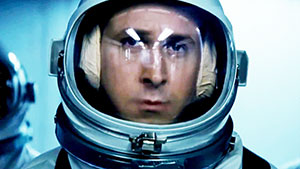

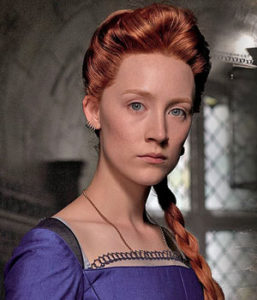
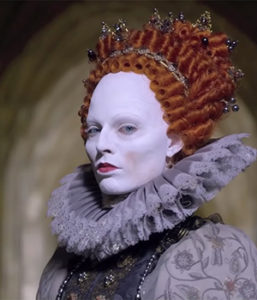
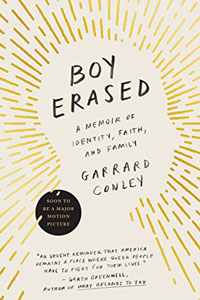

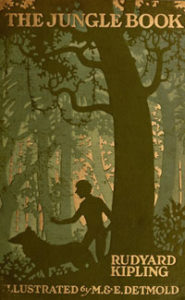
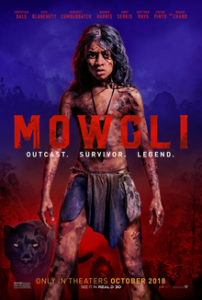
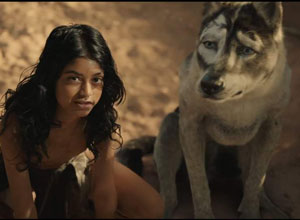


Catherine Arcure - 1962
What a great column by Frank Beaver on books to movies. I’ve always appreciated the great knowledge and insights Frank has had about movies but this is a bonus looking forward. Thanks, thanks, thanks.
Reply
Herb Bowie - 1973
In this same context, might also be worth mentioning the film Colette. Not quite based on a novel, but on the life of a novelist, with a script co-written by U-M alum Richard Glatzer (now sadly deceased). Scheduled to be released in the US on Sept. 21. Premiered at Sundance this year, and has received positive reviews.
Reply